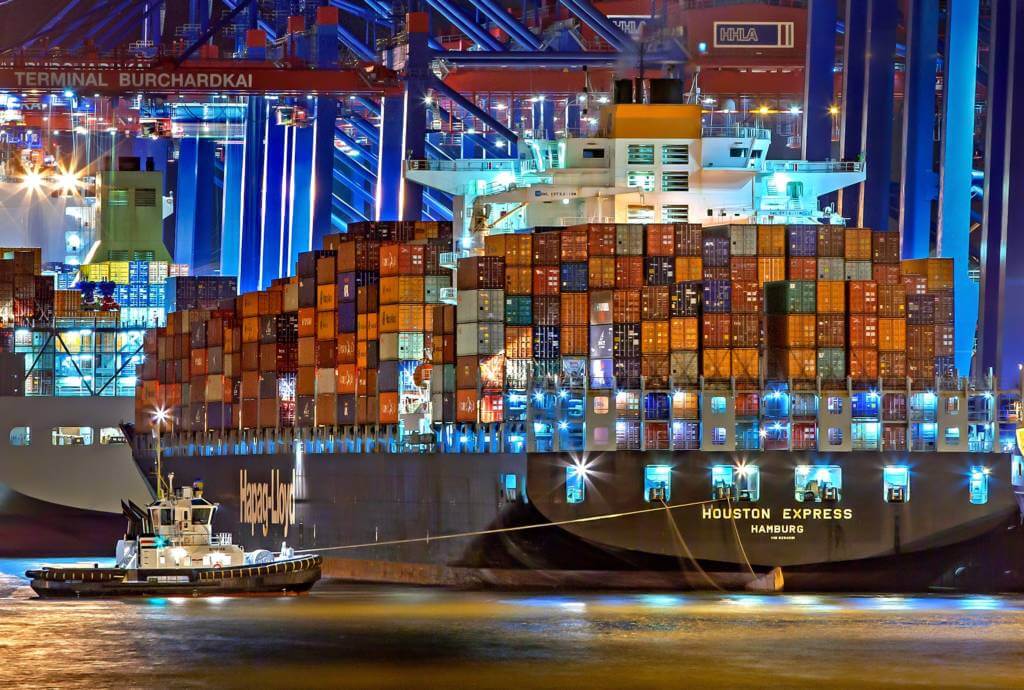
Do you want to know how access to trade finance can increase your cross-border imports and exports? Explore our Trade Finance hub for practical tools.
Are you a treasury or operations manager looking to mitigate the risks and efficiently manage your business’ cash flow? If so, check out our Treasury Management hub.
Whether you want updates from infrastructure support to cross-border transactions or clearing house operations to processing techniques, you can find all on our Payments hub.
Ready to to increase your imports / exports to guarantee the payment and delivery of goods? Find out more about LCs here.
Whether you’re transporting goods, or learning about supply chains, warehousing, transportation and packaging, we’ve got you covered.
Need to know which International Commerce Term is right for your needs? Explore our curated guides from shipping expert Bob Ronai.
Prioritising sustainable supply chains? Building inclusive trade? Working towards the UN’s 2030 SDGs? Read the latest on global sustainable standards vs green-washing here.
Heading into international markets? From the correct documentation to standardisation, here’s what you need to know for a streamlined customs clearance process.
TradeTech is rapidly evolving to help reduce some of the biggest challenges when it comes to trade. Keep up with these innovations here.
The issues feature experts across the industry on the latest developments with specific themed and regional editions.
Insights by the industry, for the industry. These include thought leadership pieces, interview write ups and Q&As.
Working closely with industry experts and trade practitioners we provide inclusive educational guides to improve your technical knowledge and expertise in global trade.
We undertake qualitative and quantitative research across various verticals in trade, as well as create reports with industry association partners to provide in-depth analysis.
Subscribe to our market-leading updates on trade, treasury & payments. Join the TFG community of 160k+ monthly readers for unrivalled access in your inbox.
Welcome to Trade Finance Talks! On our series we hear from global experts in trade, treasury & payments.
Experience the true nature of the TFG community through panel discussions on the latest developments - engage with questions.
Join us as we interview leaders in international trade, treasury, payments and more! Watch and learn.
We partner with industry conferences around the world to ensure that you don’t miss out on any event; in person or online, add to your calendar now.
Get involved in our most important campaign of the year, celebrating the achievements of women in our industry and promoting gender equity and equality.
Our excellence awards in trade, treasury, and payments are like no other. You can't sponsor them, and they're independently judged. They are the most sought-after industry accolades.
Trade finance is a tool that can be used to unlock capital from a company’s existing stock, receivables, or purchase orders. Explore our hub for more.
A common form of business finance where funds are advanced against unpaid invoices prior to customer payment
Also known as SCF, this is a cash flow solution which helps businesses free up working capital trapped in global supply chains.
A payment instrument where the issuing bank guarantees payment to the seller on behalf of the buyer, provided the seller meets the specified terms and conditions.
The release of working capital from stock, through lenders purchasing stock from a seller on behalf of the buyer.
Due to increased sales, a soft commodity trader required a receivables purchase facility for one of their large customers - purchased from Africa and sold to the US.
Purchasing commodities from Africa, the US, and Europe and selling to Europe, a metals trader required a receivables finance facility for a book of their receivables/customers.
An energy group, selling mainly into Europe, desired a receivables purchase facility to discount names, where they had increased sales and concentration.
Rather than waiting 90 days until payment was made, the company wanted to pay suppliers on the day that the title to goods transferred to them, meaning it could expand its range of suppliers and receive supplier discounts.


Mark heads up the trade finance offering at TFG where his team focuses on bringing in alternative structured finance to international trading companies.
We assist companies to access trade and receivables finance through our relationships with 270+ banks, funds and alternative finance houses.
Download our our free Letters of Credit guide

A Standby Letter of Credit (SBLC / SLOC) is a guarantee that is made by a bank on behalf of a client, which ensures payment will be made even if their client cannot fulfill the payment. It is a payment of last resort from the bank, and ideally, is never meant to be used.
An SBLC is frequently used as a safety mechanism for the beneficiary, in an attempt to hedge out risks associated with the trade. Simplistically, it is a guarantee of payment which will be issued by a bank on the behalf of a client. It is also perceived as a “payment of last resort” due to the circumstances under which it is called upon. The SBLC prevents contracts from going unfulfilled if a business declares bankruptcy or cannot otherwise meet financial obligations.
Furthermore, the presence of an SBLC is usually seen as a sign of good faith as it provides proof of the buyer’s credit quality and the ability to make payment. In order to set this up, a short underwriting duty is performed to ensure the credit quality of the party that is looking for a letter of credit. Once this has been performed, a notification is then sent to the bank of the party who requested the Letter of Credit (typically the seller).
In the case of a default, the counter-party may have part of the finance paid back by the issuing bank under an SBLC. Standby Letter of Credits are used to promote confidence in companies because of this.

There are many aspects that a bank will take into consideration when applying for a Standby Letter of Credit, however, the main part will be whether the amount that is being guaranteed can be repaid. Essentially, it is an insurance mechanism to the company that is being contracted with.
As it is insurance, there may be collateral that is needed in order to protect the bank in a default scenario – this may be with cash or assets such as property. The level of collateral required by the bank and by the size of the SBLC will largely depend on the risk involved, and the strength of the business.
There are other standard due diligence questions asked, as well as information requests regarding assets of the business and even possibly the owners. Upon receipt and review of the documentation, the bank will typically provide a letter to the business owner. Once the letter has been provided, a fee is then payable by the business owner for each yeah that the Standby Letter of Credit remains outstanding.
It is standard for a fee to be between 1-10% of the SBLC value. In the event that the business meets the contractual obligations prior to the due date, it is possible for an SBLC to be ended with no further charges.
A Standby Letter of Credit is different from a Letter of Credit. An SBLC is paid when called on after conditions have not been fulfilled. However, a Letter of Credit is the guarantee of payment when certain specifications are met and documents received from the selling party.
Letters of credit promote trust in a transaction, due to the nature of international dealings, distance, knowledge of another party and legal differences.
Where goods are sold to a counter-party in another country, they may have used an SBLC to ensure their seller will be paid. In the event that there is non-payment, the seller will present the SBLC to the buyer’s bank so that payment is received.
A performance SBLC makes sure that the criteria surrounding the trade such as suitability and quality of goods are met.
We sometimes see SBLCs in construction contracts as the build must fulfill many quality and time specifications. In the event that the contractor does not fulfill these specifications then there is no need to prove loss or have long protracted negotiations; the SBLC is provided to the bank and payment is then received.